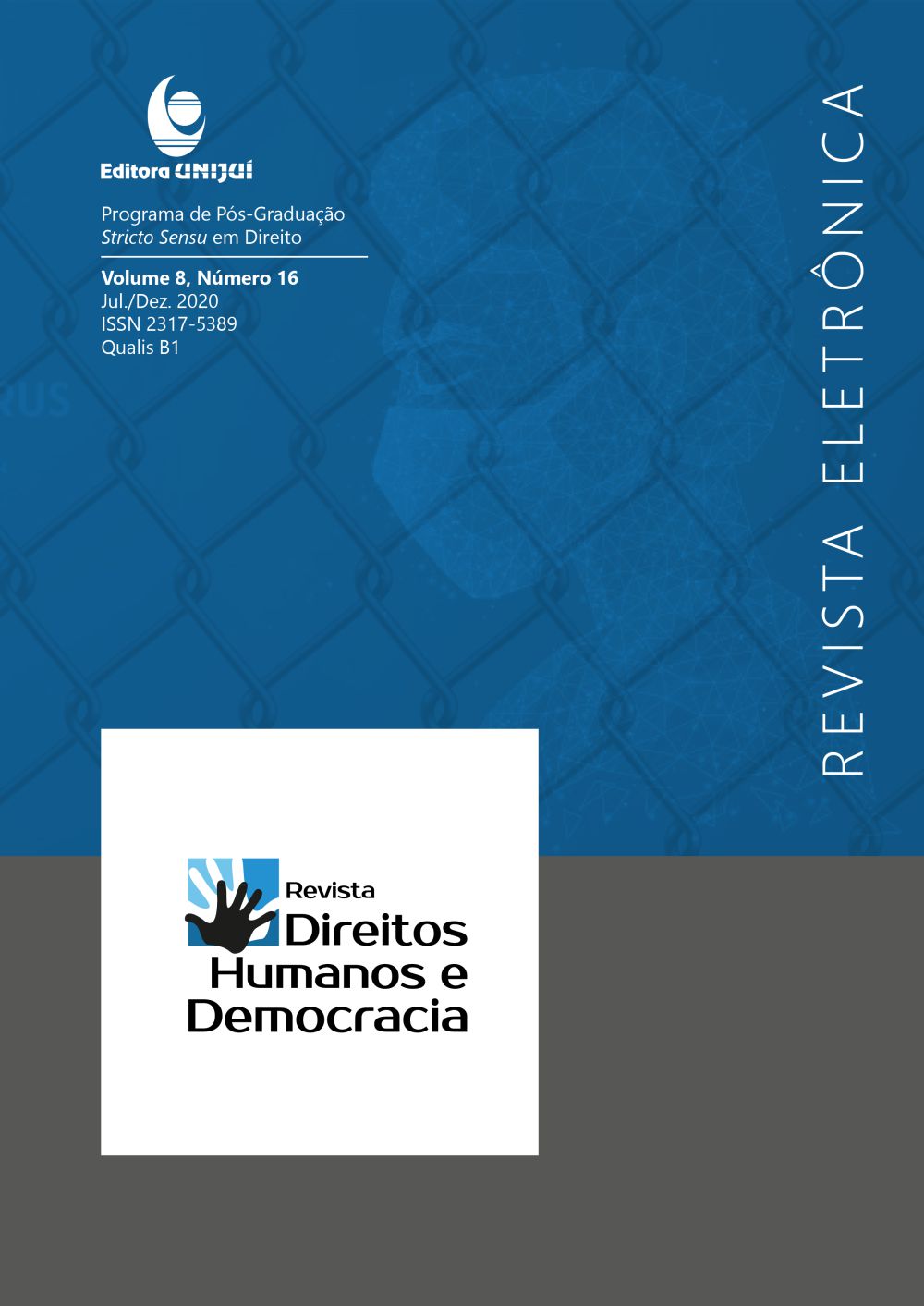CYBERBULLYING: INTIMIDAÇÃO SISTEMÁTICA, CONSTRANGIMENTO VIRTUAL E CONSEQUÊNCIAS JURÍDICAS
DOI:
https://doi.org/10.21527/2317-5389.2020.16.260-279Palavras-chave:
ciberespaço; cyberbullying; constrangimento; crimes virtuaisResumo
Este artigo tem o escopo de compreender a relevância jurídica da discussão sobre o cyberbullying. Sua hipótese é de que as atuais formas relações sociais digitais acarretam a possibilidade de abuso, de forma similar ao que ocorre presencialmente — porém, de modo potencializado pela complexidade, pelo alcance e pela velocidade que as redes sociais oferecem. Como resultados, tem-se que as relações nas redes sociais replicam práticas abusivas que ocorrem também fisicamente, causando danos morais e existenciais. Frente a isso é necessário que existam análises e práticas cuidadosas desse tipo de prática, em um esforço conjunto entre Estado, escolas, famílias e administradores de redes sociais, para que possam ser coibidas. Metodologia: método de procedimento hipotético-dedutivo, com abordagem qualitativa e técnica de pesquisa bibliográfico-documental.
Downloads
Publicado
Como Citar
Edição
Seção
Licença
Ao publicar na Revista Direitos Humanos e Democracia, os autores concordam com os seguintes termos:
Os trabalhos seguem a licença Creative Commons Atribuição 4.0 Internacional (CC BY 4.0), que permite:
Compartilhar — copiar e redistribuir o material em qualquer meio ou formato;
Adaptar — remixar, transformar e criar a partir do material para qualquer fim, inclusive comercial.
Essas permissões são irrevogáveis, desde que respeitados os seguintes termos:
Atribuição — os autores devem ser devidamente creditados, com link para a licença e indicação de eventuais alterações realizadas.
Sem restrições adicionais — não podem ser aplicadas condições legais ou tecnológicas que restrinjam o uso permitido pela licença.
Avisos:
A licença não se aplica a elementos em domínio público ou cobertos por exceções legais.
A licença não garante todos os direitos necessários para usos específicos (ex.: direitos de imagem, privacidade ou morais).
A revista não se responsabiliza pelas opiniões expressas nos artigos, que são de exclusiva responsabilidade dos autores. O Editor, com o apoio do Comitê Editorial, reserva-se o direito de sugerir ou solicitar modificações quando necessário.
Somente serão aceitos artigos científicos originais, com resultados de pesquisas de interesse que não tenham sido publicados nem submetidos simultaneamente a outro periódico com o mesmo objetivo.
A menção a marcas comerciais ou produtos específicos destina-se apenas à identificação, sem qualquer vínculo promocional por parte dos autores ou da revista.
Contrato de Licença: Os autores mantém os direitos autorais sobre seu artigo, e concedem a Revista Direitos Humanos e Democracia o direito de primeira publicação.













